Art World
Renzo Piano’s Centro Botín Opens in Santander, Triumphing Over Controversies and Delays
After a three-year delay, the stunning private museum is finally open. But can its program match the architecture?
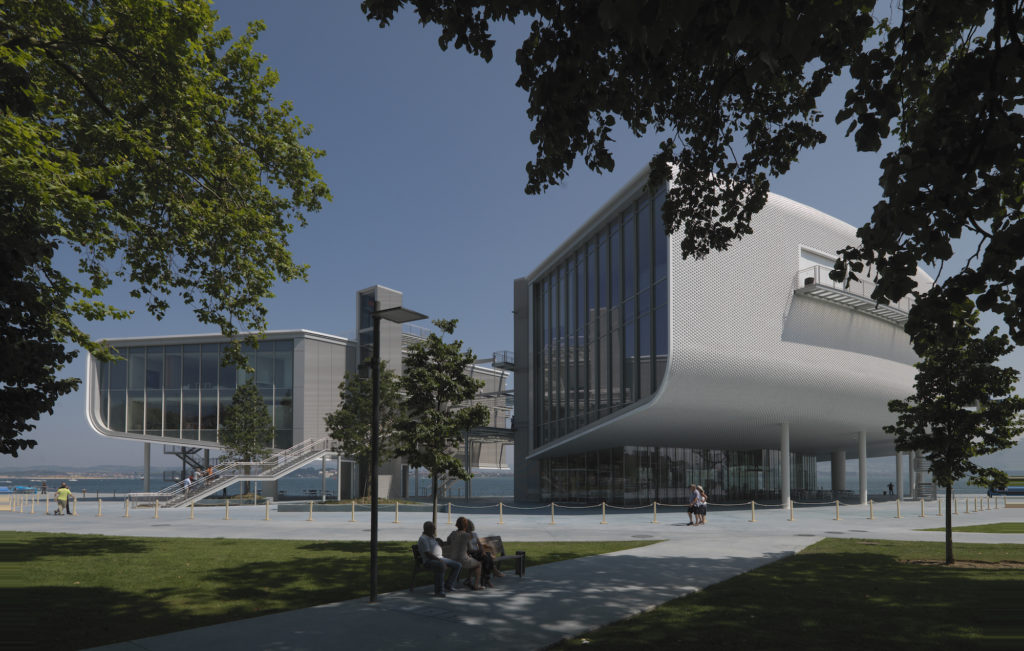
After a three-year delay, the stunning private museum is finally open. But can its program match the architecture?

Lorena Muñoz-Alonso

The long-awaited Centro Botín, a stunning art center designed by Renzo Piano, opens its doors to the public in Santander tomorrow. Located just an hour away from Bilbao’s Guggenheim Museum, the new institution is poised to become a major art-world destination, and hopes are high that it will bring the kind of revenue and benefits known as the “Bilbao Effect” to the northern Spanish city.
The art center is an entirely private initiative, spearheaded and funded by the Fundación Botín, a philanthropic institution founded in 1964 that has been running a renowned arts and education program and assembling a permanent art collection for over two decades. The important role that the Fundación Botín plays within the Spanish cultural landscape is evidenced by the fact that the center was officially inaugurated this morning by the King Felipe IV and Queen Letizia of Spain.
With an official total budget of €80 million (and a rumored overspend of €20 million, according to local press), the center—Piano’s first major project in Spain—was first slated to open in 2014. The reasons behind the three-year delay seem to have been manyfold, but were never officially explained.
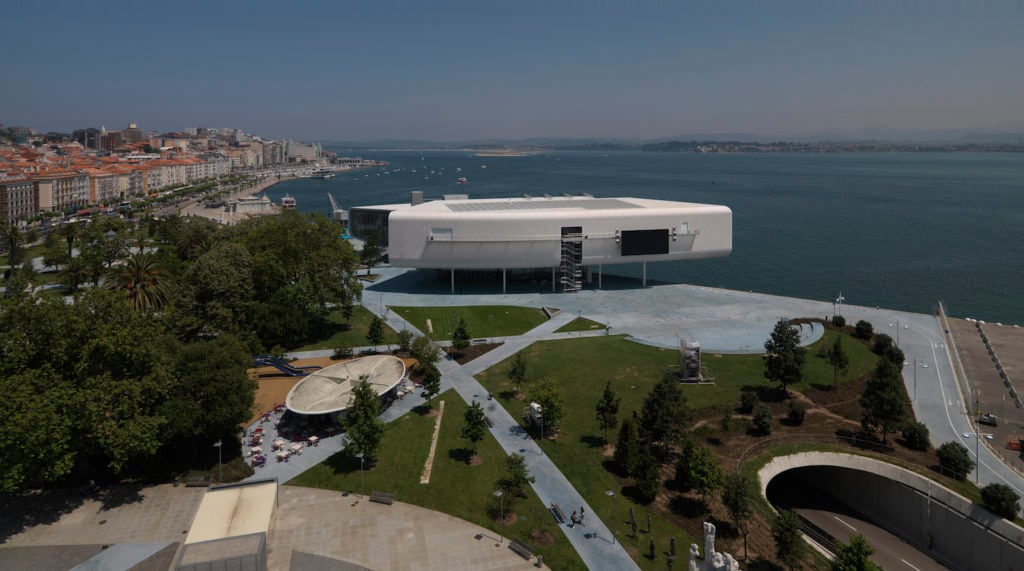
The Centro Botín in Santander. Photo Enrico Cano, courtesy Centro Botín.
For example, there were enduring disagreements with members of the local community over the waterfront location of the building, which many have claimed would obstruct the sea view (with some eco-activists even lodging a complaint at a local court, which was later dismissed.)
“In the first stages of the project, it was hotly debated whether the Centro Botín should be built in the center or the periphery, like the Guggenheim Bilbao, which was erected in a degraded urban area that was dramatically regenerated and revalued as a result,” Roberto Morado, a local engineer and urban development expert, told artnet News.
The exacting technical requirements of Piano and his team—responsible for a whopping 25 museums, and counting—have also been cited by many as a reason for its protracted construction. Three years seems like a long delay, but on Wednesday night, as he gave a tour of the building to a group of international journalists, Piano seemed unfazed by questions on this matter.
“Architecture is a long game,” he said calmly. “Taking four or five years to build a major project [construction began in 2012] seems completely usual to me.”
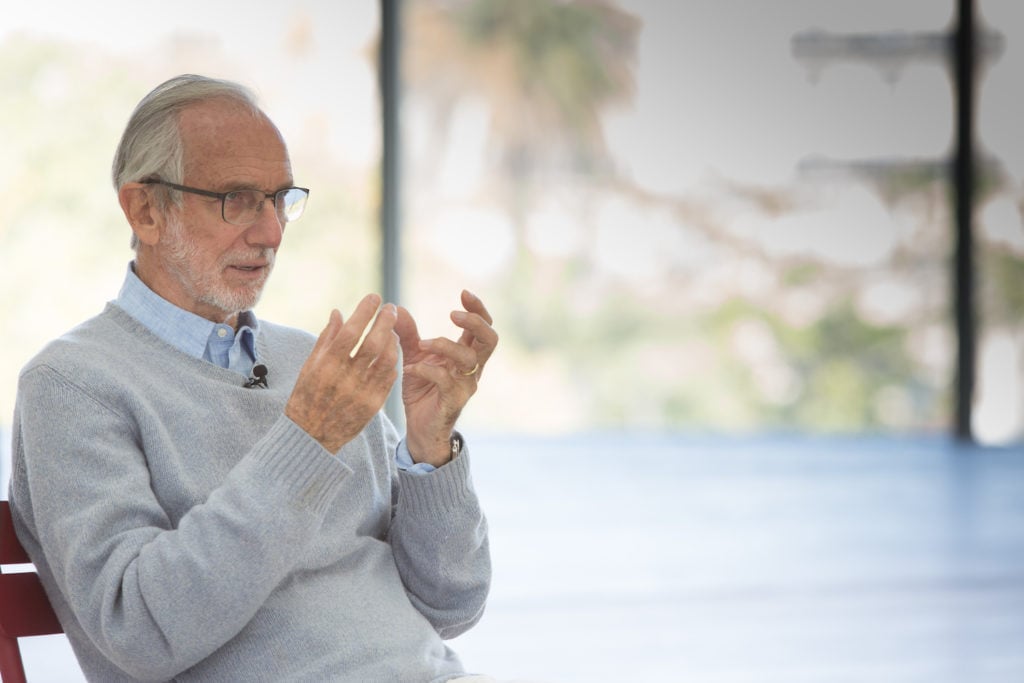
Renzo Piano. Photo ©Belen de Benito.
Had it opened in 2014, as initially expected, the center might have been seen by its initiator and commissioner, Emilio Botín. The late chairman of the Banco Santander and major arts patron died in September of that year, without having seen his long-held dream completed.
Almost three years later, the Centro is finally a reality, and it seems that what were once deemed as its most controversial aspects—its location on stilts overlooking the water; the refurbishment and modernization of the classic Pereda Gardens, where it sits; and its prime position within the urban center—are in fact its biggest strengths.
“Every new daring project inevitably sparks some sort of controversy,” Carlos Vallejo and Wendy Navarro, key local art collectors, told artnet News. “But we believe the city has in fact improved as a result of building the center. By diverting the main road through the new tunnel and expanding the gardens they have created a fantastic area for pedestrians—free of cars, pollution, and noise—which connects the urban center with the seafront.”
The architecture too is sublime: the Centro Botín seems to be floating on the bay, flooded in light, with its galleries boasting dramatic views to the sea on one side and to the city on the other—”This building is flirting with the water,” as Piano rather poetically put it to journalists during the press conference.
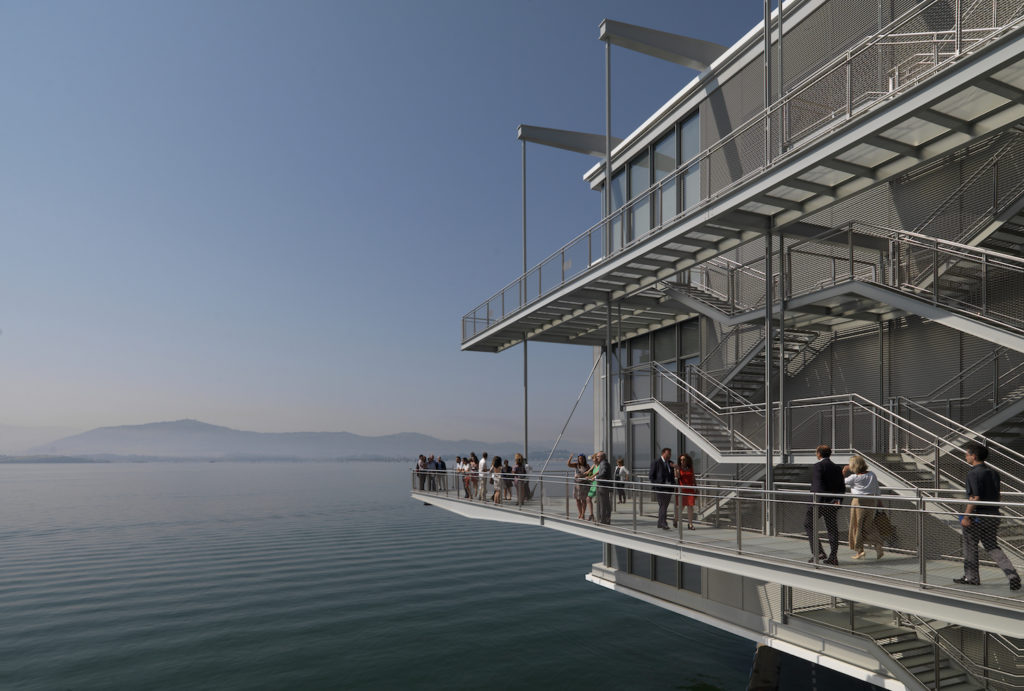
The Centro Botín in Santander. Photo Enrico Cano, courtesy Centro Botín.
The Centro Botín is a typical Piano building, in that many of its structural elements are kept visible rather than concealed under cladding. The exterior is also relentlessly brought to the interior: One almost feels at sea when walking around the center. The galleries have massive windows, and boats and ferries can be seen passing by, seemingly at the reach of one’s hand (it turns out, unsurprisingly, that Piano is a keen sailor and boatbuilder). Its dramatic roof terrace and metallic platforms bring to mind Piano’s Whitney Museum in New York, only that here, the stunning vista is of the deep blue sea, rather than an urban jungle.
The building’s interior follows the same style, with exposed ventilation systems, poles, and other metallic elements. This makes the spaces interesting in terms of texture, but it also makes them compete—and sometimes win—against the art on display.
Which brings us to the three inaugural exhibitions, which felt like a rather lackluster opening salvo in comparison with such a potent architectural statement.
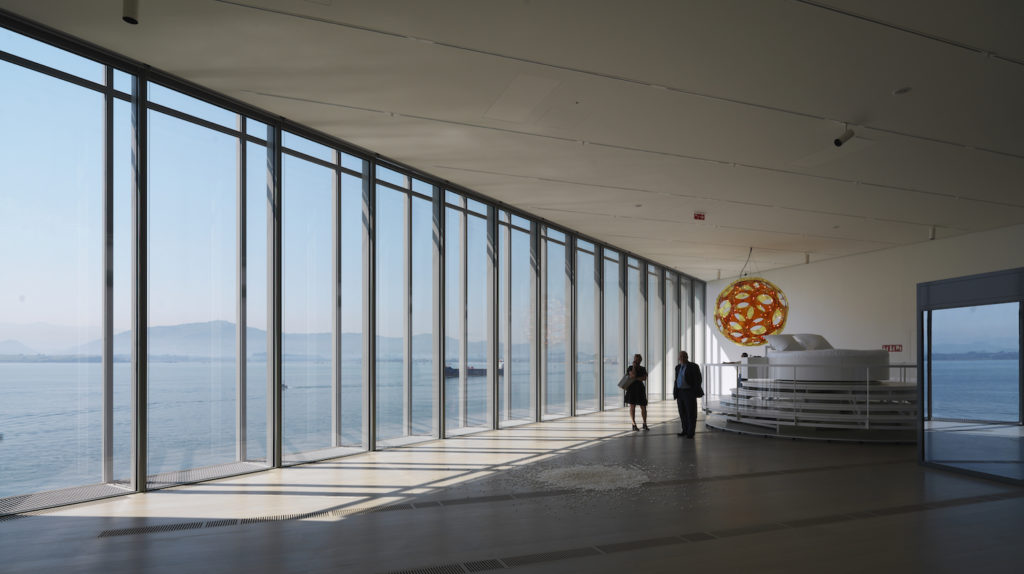
Installation of Carsten Höller’s exhibition at Centro Botín, Santander. Photo Enrico Cano, courtesy Centro Botín.
The first is a solo show by Carsten Höller—titled “Y” and curated by Vicente Todolí and Udo Kittelmann—whose opening coincides with that of “REASON” at Gagosian New York. Although featuring new and recent works by Höller, the exhibition at Centro Botín—his first solo show in Spain—reads like a “greatest hits” of sorts: there’s a classic bed work (Elevator Bed, 2010) where guests will be able to spend the night; olfactory pieces (Smell of My Mother and Smell of my Father, both 2017); a dispenser with white pills that pile up on the center’s floor (Pill Clock, 2015); sliding doors; flickering lights… It’s all very participatory, very Relational Aesthetics. Höller even told journalists to consider all the pieces in the show as “one big work,” the exhibition as artwork, nostalgic of that 1990s movement so well captured by the curator Nancy Spector in her 2008 exhibition “theanyspacewhatever” at the Guggenheim New York.
Seemingly riffing on works by Philippe Parreno, Felix Gonzalez-Torres, and even Martin Creed (those lights going on and off), the show is fun and accessible, but perhaps a little unchallenging.
There’s also a phenomenal show of drawings by Francisco de Goya, gathering 83 works on paper by the Spanish master from the collection of the Museo del Prado in Madrid. The show, expertly curated by the Prado’s José Manuel Matilla and Manuela Mena, is in fact a collaboration between the two institutions, which will culminate in the publication of the catalogue raisonné of Goya’s drawings, the first volume of which has just been launched. The exhibition is stunning and topical—Goya’s political and existential anguishes as relevant now as they were then—but as a gesture, at least for me, it fails to communicate the Centro’s commitment to contemporary art, and Goya seems, again, like a rather safe choice for a Spanish institution.
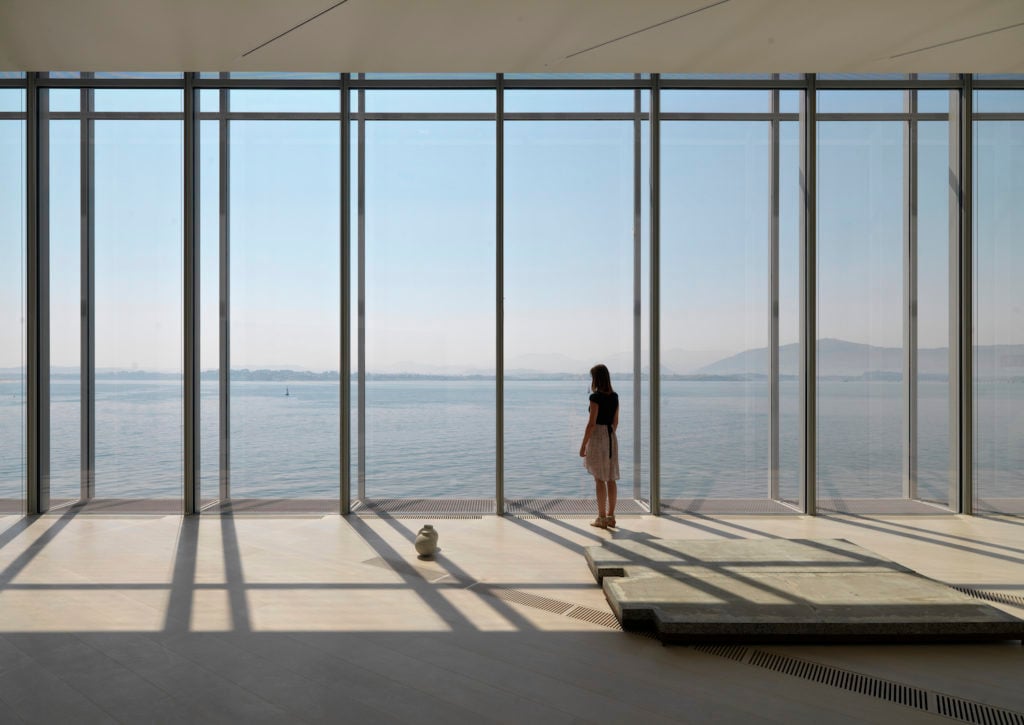
Work by Miroslav Balka at Centro Botín, Santander. Photo Enrico Cano, courtesy Centro Botín.
Meanwhile, the third exhibition gathers works from the permanent collection of Fundación Botín, featuring pieces both by artists who have directed workshops at the foundation—like Miroslav Balka, Mona Hatoum, Tacita Dean—and recipients of the Visual Arts program, which has supported a string of young and emerging Spanish artists for over 15 years.
Santander is a small city of 170,000 residents—almost half the number of those living in Bilbao—with rather conservative cultural tastes, so it’s understandable that the Centro, whose construction caused such a stir already, has opted for a relatively tame inaugural program. But after having successfully completed such an architectural tour de force, it’d be good to see the center pushing the envelope in terms of its contents too, to position itself as a fully-fledged art destination capable of complementing (and even competing with) its blockbuster neighbor, the Guggenheim Bilbao.
“The opening of the Centro Botín is great news for the Santander art scene,” the art collectors Fernando and Marivi Meana, closely linked to the local art scene, told artnet News.
“It will never be like the Guggenheim Bilbao, as the center doesn’t have the Guggenheim brand behind it, and its mission was not to transform and regenerate the city as a whole, like the museum in Bilbao did,” the added. “But given their proximity, it’d be fantastic if they could work together, creating a Bilbao-Santander axis, proving the significant role that art can play on a social and economic level.”
“We’ve always envisioned this center as both local and global,” Fátima Sánchez, the executive director of Centro Botín, said during the press conference.
Their local strategy seems to have paid off, despite the initial misgivings from some members of the community: by the week of the opening, the Centro had issued over 70,000 passes that will grant permanent free entry to all those born and living in the region of Cantabria (the rest will have to pay an entry fee of about €8). Today, there seems to be a genuine sense of excitement in the streets of Santander about what the Centro Botín will bring to them. Only time will tell if those global ambitions come to fruition as well.